Young over the years, yes old mind: the story of the brand FiiO
Hi, Giktayms! The year 2007 was in many ways a turning point for the sound market - there was an end to the boom of digital players, when every year the demand for portable audio devices increased two or even three times. On the other hand, the cheapening of components and the development of flash memory strongly pushed manufacturers forward, and even the French Archos, which was held until the last moment, finally presented three models on flash memory. And there and the headphones did not stand aside - the same Audio-Technica launched the QuietPoint Noise-Canceling Headphones line - active noise-canceling headphones. And at this time, somewhere in China, a new player was born - the company FiiO.
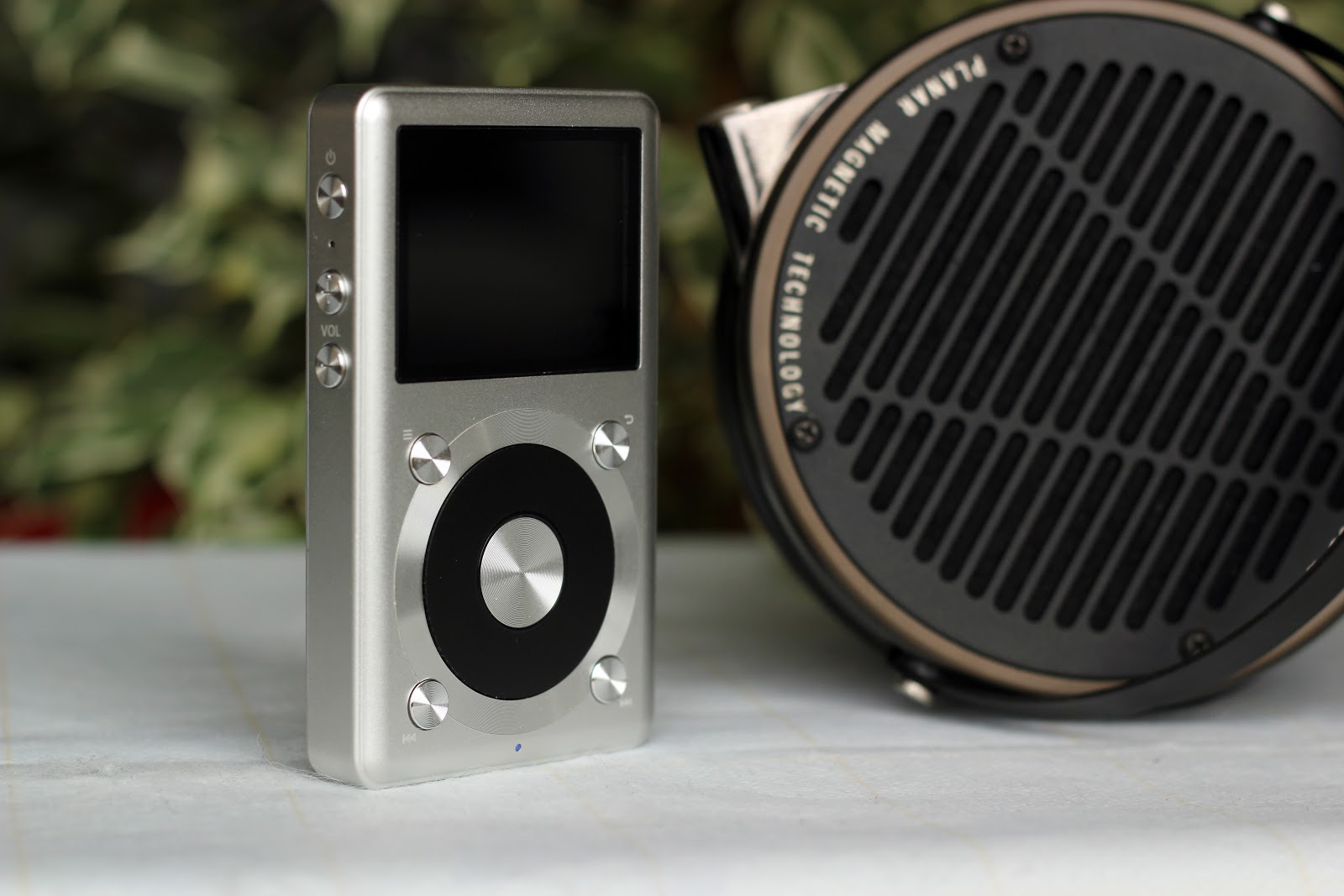
Founded on April 26, FiiO quickly evolved from catching up to one of the industry leaders - yet the quality of its headphone amplifiers put in the prestigious word to buyers. Now we know that this company is known for its devices with an optimal ratio of price and quality, thus, in less than 10 years, it managed to turn the portable Hi-Fi market upside down. But it all began quite differently.
FiiO introduced its first device in 2007 - it was a PS1120 speaker dock with Meizu players. The device had an interesting unibody design, two 50mm high quality drivers, a class D amplifier, and the power supply was carried out using both a USB port and four AA batteries.
')

The development of the device began in 2006, when the creators of FiiO decided to establish contact with representatives of Meizu in order to produce docking stations for their players - then these gadgets sold very well. To their surprise, Meizu also had plans to release such a device, so it was decided to start developing a column with a built-in docking station. Soon, the design was approved, all components were purchased, but after a few months Meizu stated that she was not interested in cooperation.
It so happened that the refusal of Meizu was a turning point in the history of FiiO, because it was after this that the creators decided to collect all the money, start production and establish their own company. The first device FiiO sold tens of thousands of copies, but most importantly - gave the necessary impetus for the further development of new portable devices.
The next in the line of gadgets FiiO was a compact, but loud portable speaker PS1100 Walkbox, introduced in 2009. It was a speaker with a simple rectangular case, almost the entire front panel of which was a speaker grille. Two 27mm high-performance drivers using neodymium magnets gave a cool sound, and the speaker itself was no thicker than the first-generation iPhone.
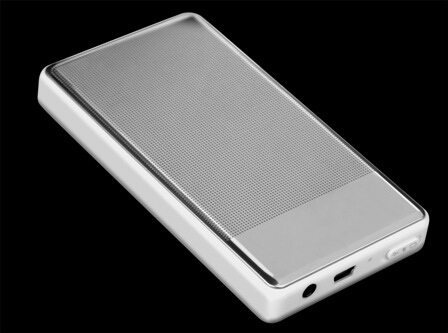
The device worked from two AAA batteries and using a USB port, connected to players and even mobile phones via a 3.5 mm jack. For the price of only $ 14.90, about 10,000 such devices were sold, including to some European countries. But that was only the beginning.
In 2010, FiiO showed a small box that represented its first headphone amplifier, the E3. Two outputs at the top and bottom of 3.5 mm, the red diode, the door for the AAA battery, no buttons and switches - turns off the E3 by simply pulling out the headphones.
The plastic case, the National Semiconductor LM4917 amplifier inside, the 15-cm wire in the kit - and looked, and the amplifier worked perfectly. True, not everyone noticed the apparent effect of its use, and in Russia it was impossible to buy this miracle at all - travelers from China rescued.
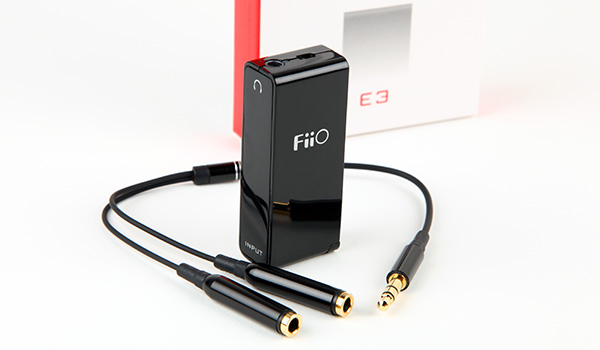
In general, at first E3 was not sold at all. Then one of the Chinese distributors drew attention to an interesting accessory and decided to donate it along with headphones to customers. Users quickly appreciated the compact, inexpensive and useful device, so FiiO did not minimize E3 production until 2014. This small box was the first step of the company on the way out of loss to profit.
The fourth product FiiO was (attention) - universal charger 5V / 2A P3. It connected to a power source, had a USB port for charging mobile devices, and even two special slots for charging AA / AAA batteries. And when the P3 was not connected to the network, it could be used as an external 5V battery — you only had to leave it inside the battery. Yes, this is the original Power Bank.
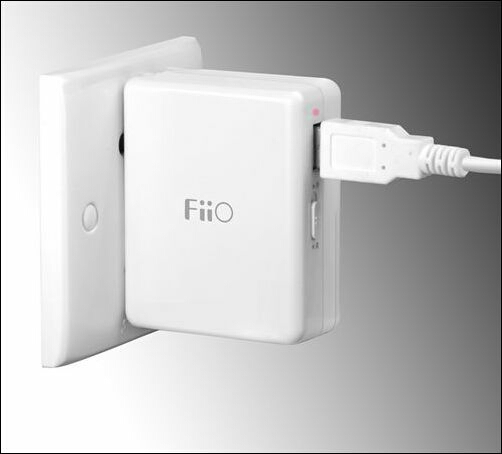
Unfortunately, P3 did not become a device of its time, yet then the battery life of mobile devices was calculated not in hours, as it is now, but in days. Therefore, not much is known about him. FiiO sold no more than five thousand such devices.
Another interesting product of that time was a portable speaker with a built-in card reader - S3. You could insert an SD memory card and listen to the music stored on it. Power was supplied by two AA batteries, while the device could continuously play music for 8 hours. Digital volume control, class D amplifier, two stereo speakers, 3.5 mm input, USB port - all this is included. The latter was used to download music to the memory card and power.

The kit even had a plastic leg, which made it convenient to install the device on the surface. S3 was well received by buyers - one might say, even too well, since competitors quickly began to copy this decision. The experience of the latter was more, both in marketing and pricing, which allowed them to keep a low price level. And buyers began to look more and more towards compact players, rather than similar devices. FiiO in this situation had no choice but to leave the market of portable acoustics.
2010 With its sixth device, FiiO decided to return to the market of headphone amplifiers with a new model E5. It is made in a metal case, equipped with a clip, even works with high-impedance and low-sensitivity headphones. The design of the device uses a specially designed gain chip from Texas Instruments, there are two playback effects (Bass Boost and Flat), and the built-in battery provides up to 10 hours of operation.
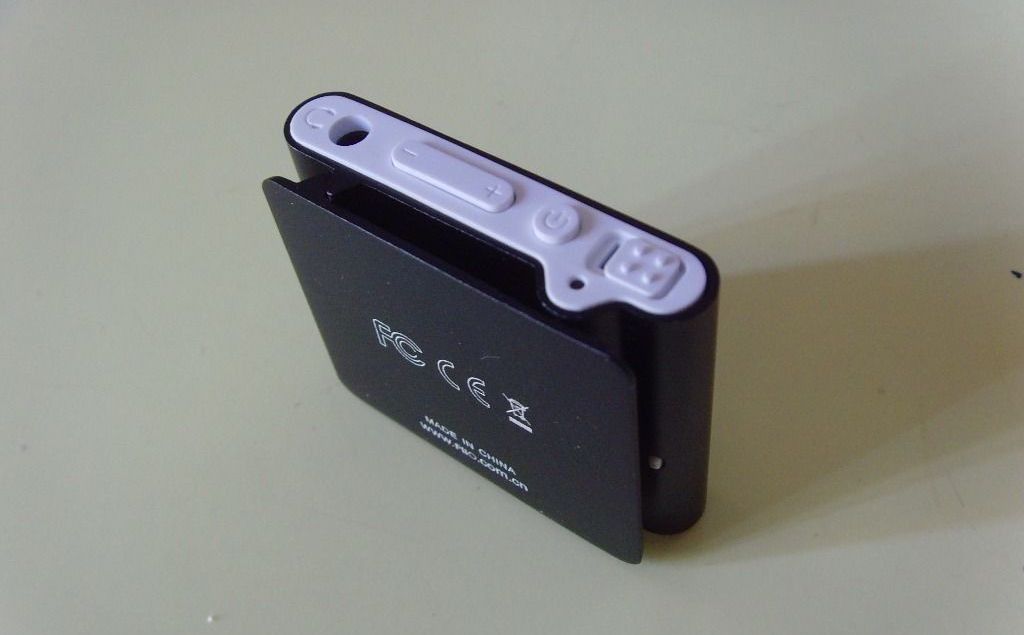
In appearance, the amplifier resembles iPod shuffle remotely, forgive FiiO for making such a comparison. Charging the device by using the mini-USB connector, there is an output connector on the headphones and volume buttons. Directly from the body, you can switch the EQ (equalizer) modes: Bass Boost (bass boost) and Flat (normal mode). The set has as many as two audio cables - 15 cm and 80 cm long, both minijack and minijack.
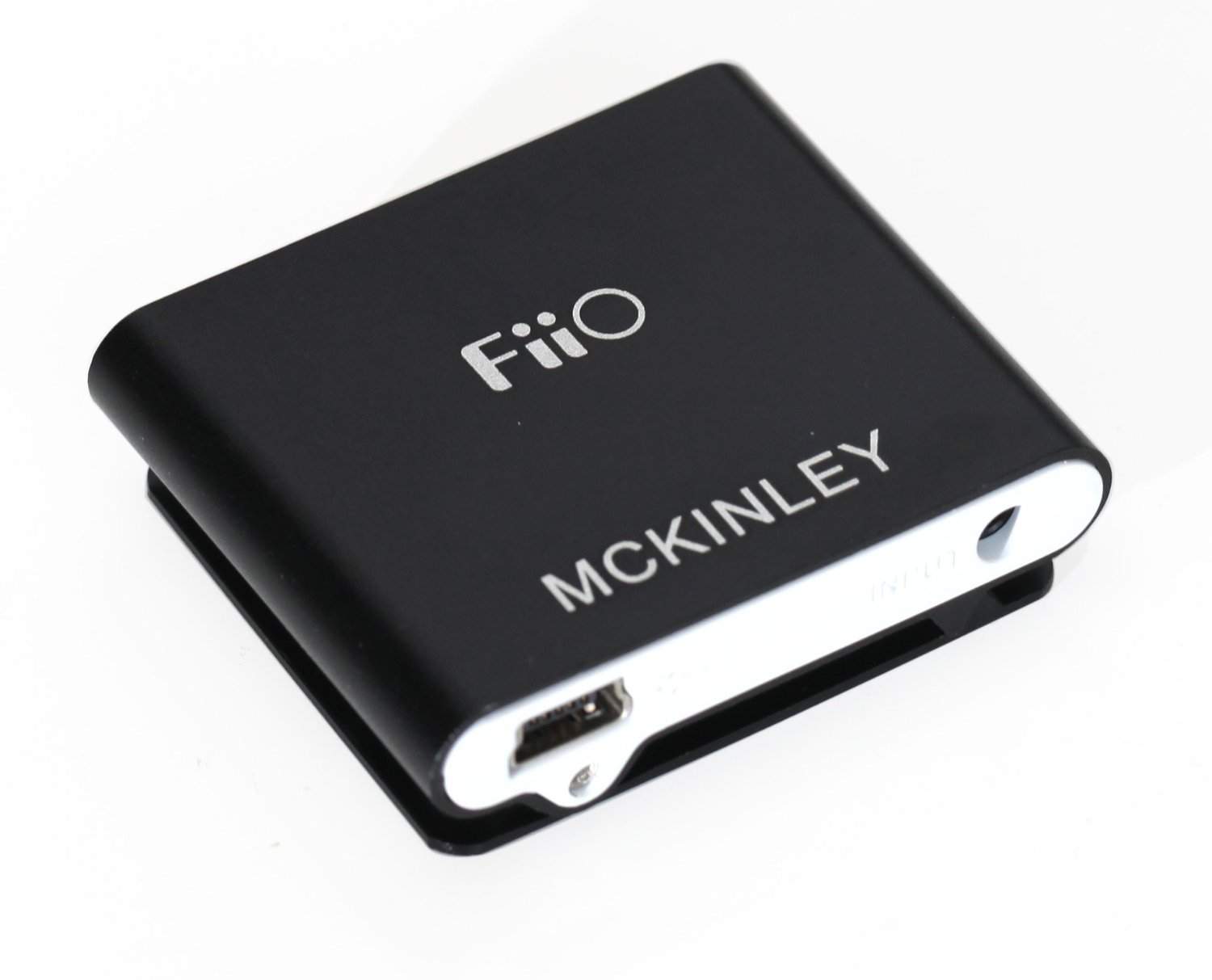
The main buyers of E5 were those who liked the E3. To keep the amplifier size small, FiiO first used a lithium-polymer battery. The price of E5 was slightly higher than that of E3, but it still did not hit hard on the budget - $ 20. In general, E5 fulfilled the main task - made FiiO a name among users and manufacturers all over the world. Distributors from different countries wanted to become partners of the company, and the pleasant price attracted more and more buyers.
The boom of LCD-TVs in China came in 2008 along with soundbars, which became an excellent replacement for the usual audio systems. And here the FiiO manual came up with the idea that it would be great to make a soundbar not for a TV, but for a regular computer LCD monitor. No one has done this before, and in fact primacy always guarantees success, isn't it?
The company spent months developing the design and “stuffing” of a new device, but in the end everything turned out to be in vain. There were no distribution channels, the cost was too high, FiiO produced only a few hundred of these devices. The soundbar did not even get the name, it remained with the worker.
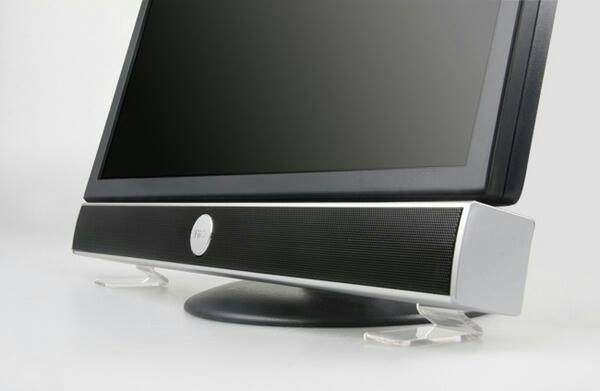
The moral of this story was obvious - if something else is not on the market, this does not mean that no one has thought of this before. Just for good reason.
Then, in 2010, Fiio unveiled its USB DAC and the new E7 headphone amplifier, a portable and powerful companion of mobile audiophile. Corporate design of blackened aluminum with texture, 2-color OLED-screen, light weight and a 1050 mAh battery. It is enough to charge it for three hours to ensure work for three days.
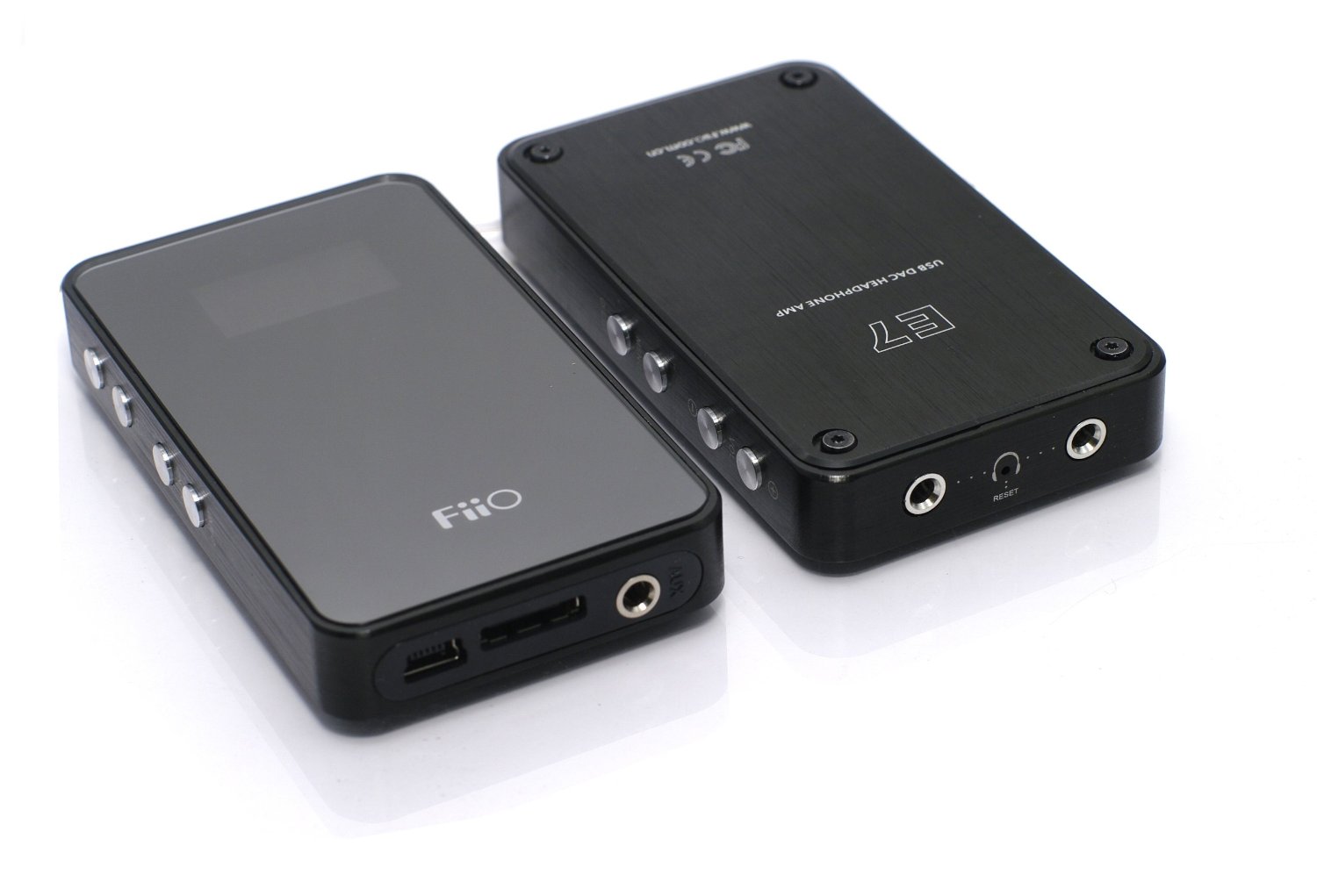
Here we are already met by many buttons - volume control, as well as to cancel and confirm the command. The equalizer gently interferes with the sound, the sound adjustment is digital (range - 60 steps), the TI PCM2706 is used as a USB controller chip, and the DAC Wolfson WM8740 also allows you to use the E7 as an external sound card. Compared to what we saw earlier - a real step forward.
2012 was for FiiO not less turning. The company updated the E7 and introduced the E07K Andes, a multifunctional portable audio processor that was primarily a DAC. In essence, this is a USB sound card with high sampling frequency and high-quality sound; and only secondarily is a portable headphone amplifier.

Also on sale is the E1, a unique, ultra-compact headphone amplifier with remote control for iPod and iPhone. To do this, it has a 30-pin connector instead of the usual 3.5 mm. Oh, nostalgia.
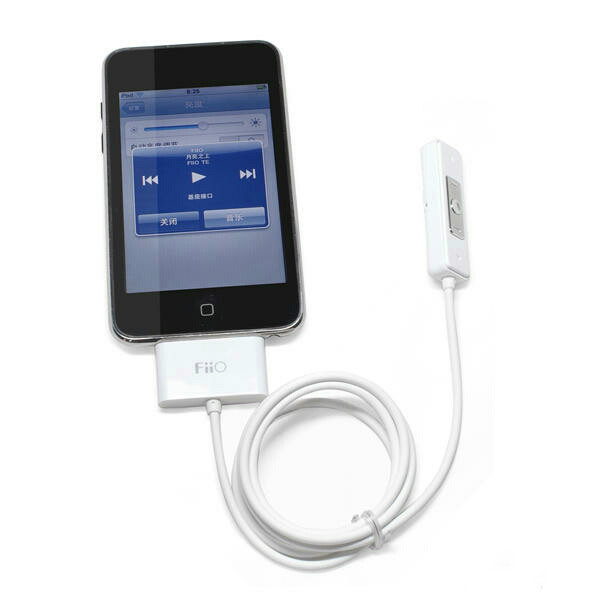
New version received and E9, which was updated to E09K Qogir. It has become a very popular headphone amplifier. On the front panel, instead of the 3.5 mm jack, a sound source switch was added, at the bottom - a 6.3 mm headphone jack. But the main thing is the docking connector for the Fiio E7 / E17 ($ 130 premium amplifier), which allows you to connect the E7 / 17 and use its DAC if you wish.
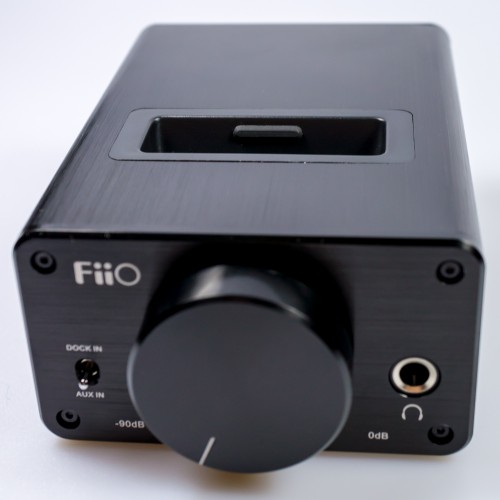
Since then, FiiO has released new devices in such a way as not to replace, but complement each other. So the S1 amplifier appeared on the market, which, however, did not sell very well - several hundred devices in the domestic market and 1-2 thousand abroad.
Or here is a miniature FiiO D3, which can be connected before the E09K, costing one and a half thousand rubles.
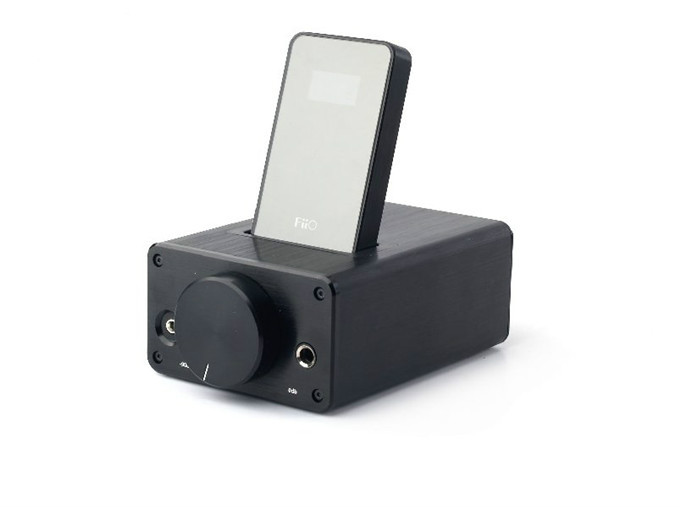

2013 was a significant year for FiiO - the company began to expand its X3 player into the market. And how many rumors, leaks and regrets that the project announced a few years before this project did not show signs of life for a long time! FiiO still managed to overcome all obstacles and release the long-awaited player.
From FiiO everyone was waiting for a real breakthrough, something completely new, because its amplifiers and DACs are very fond of audiophiles around the world - in fact, the company turned the market of portable HiFi. It was originally planned that X3 would become a player oriented towards the output of a digital signal or sound through a linear output, but then the concept changed dramatically.
Talk about this player can be long and hard. Black aluminum case with an interesting metal-like texture, sizes comparable to old mobile devices, and many connectors. On the left side there is a slot for a memory card, on the right side there is a hold switch that blocks the buttons. On the top headphone output panel and S / PDIF, and on the bottom - line-out and USB.
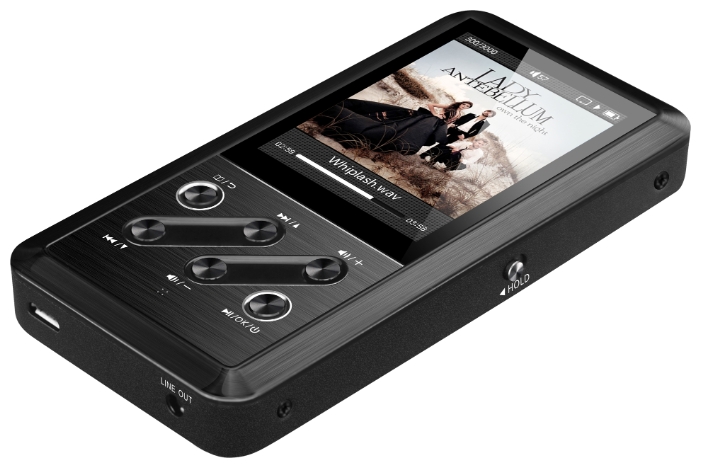
Six buttons are located diagonally under the display - the latter also pleases with its quality. Power> 540 mW @ 16Ω, 270 mW @ 32Ω, 30 mW @ 300Ω, channel separation> 75 dB @ 1 kHz, support for many formats - lossless is APE (Fast) 24/192, APE (Normal) 24/96, APE (High) 24/96, FLAC 24/192, WAV 24/192, WMA 9.1 LOSSLESS 24/192 and Apple Lossless (ALAC) 24/192.

Needless to say, the X3 had no equal price / sound ratio. For 15 thousand rubles it was just an indispensable device for any audiophile. A little later, FiiO still released the firmware, which allowed using the X3 as an external DAC. The player became a real hit, although it was criticized, but was sold in large quantities.
In 2015, the second generation X3 came out, and this event attracted no less attention than the release of the first X3. The latter was a milestone in the world of portable sound, but the second generation still managed to correct all its flaws - from the design to, directly, the sound itself. CS4398 from Cirus Logic is responsible for playback in X3 II, the amplifier uses OPA1642 and LMH6643.
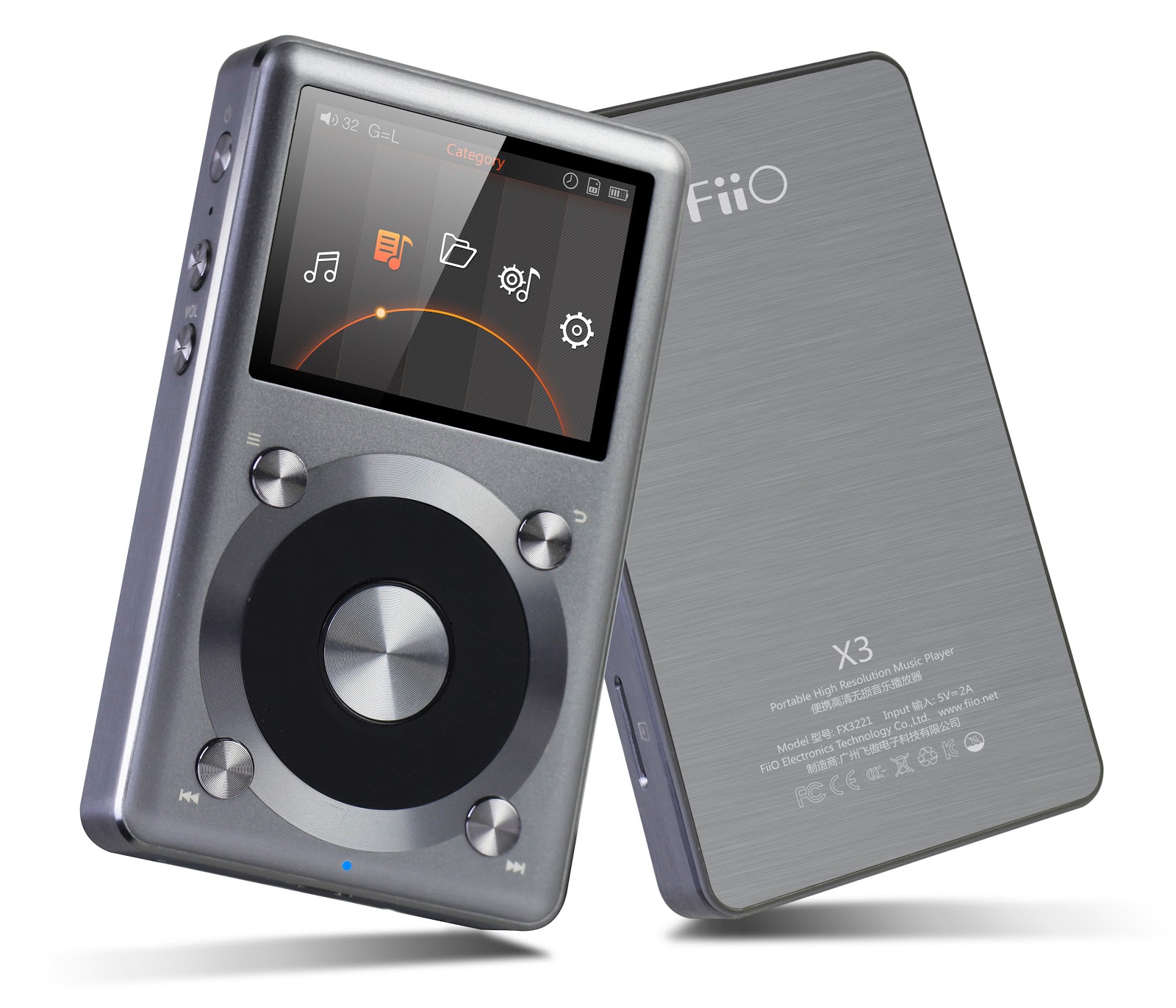
The new X3 II is made entirely of metal, the arrangement of buttons on the case has been changed, due to which ergonomics have improved. At the same time, FiiO somehow managed to keep a low price of $ 200 - so much so that in its price segment competitors are simply dropped from the bridge. But we will talk about the X3 of the second generation in more detail later.
It should be noted and the new product of 2016 - FiiO M3 , which became the debut for the company in the budget segment (about $ 50). FiiO moved away a bit from tradition and made the player not so much for audiophiles, as for ordinary listeners. Metal was replaced by plastic, controls are scattered on opposite sides of the case, six control buttons are made as a single unit under the display. Support for microSD cards has not gone away. Otherwise, everything that the mass market needs: a tiny size, lightweight, good battery life, an affordable price. Almost an iPod shuffle, yes. Only cooler.
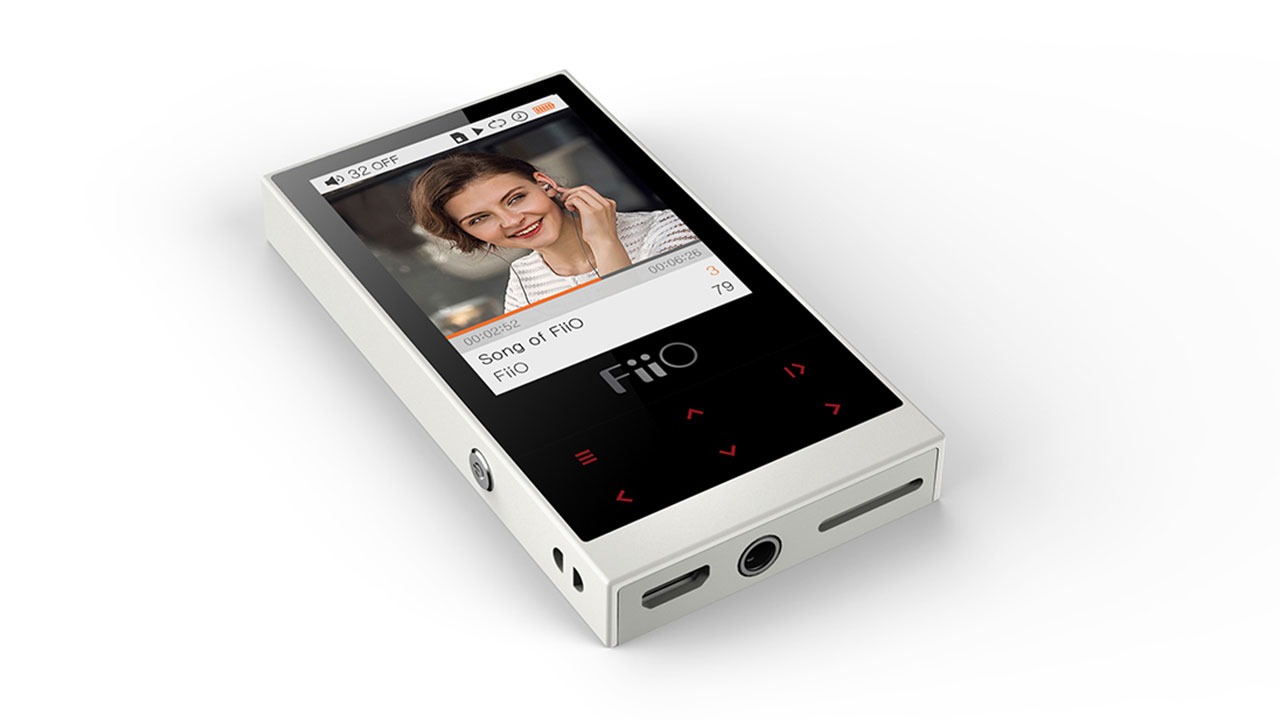
But that's not all. The largest of the FiiO line of players was the X5 of the second generation - a metal bar with a rough texture and a Texas Instruments PCM1792A DAC that supports lossless formats in quality up to 192 kHz / 24 bits, native DSD128 ‑ decoding, and so on. A distinctive feature of the player has become a better display of decent size.
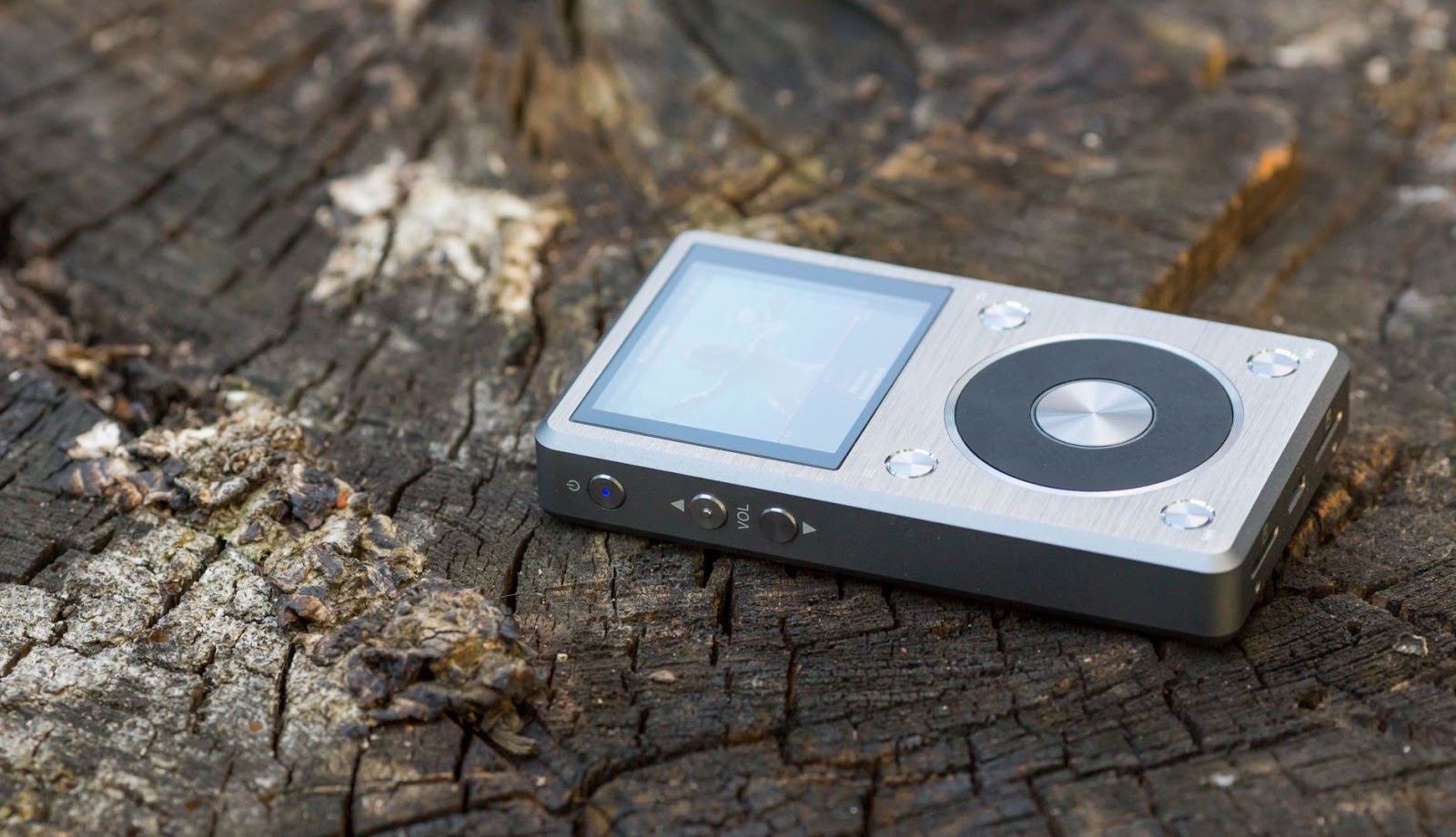
By the way, already this month the third generation of this player will enter the Russian market. New running an upgraded Android 5.1, can operate in two modes (Pure Music and Android). Wi-Fi 2.4 GHz support, AK4490EN dual D / A converter, one chip per channel, 300 mW of sound power (for 32 Ohms) and a 3,400 mAh battery make it a very tasty piece.

But the FiiO X7 will easily shake 300 omnitrels alone, but here everything is premium. The touch screen, Android, Wi-Fi, Bluetooth, consists of a player and an amplifier that connects to the bottom. Its feature is the ability to change the amplifier module to achieve the desired output power. ESS ES9018S DAC, AM2 modular amplifier with MUSES02 chip - in short, a true flagship.

In the incomplete 10 years of its existence, FiiO has been able to do so much in the sound market, that it seems as if this is all unreal. And the Chinese, it seems, will have a fuse for at least as much - as evidenced by their players, which are getting better every year. Moreover, for 10 years, the company has never (well, almost) changed its principles: practicality, convenience and reliability. And if everything goes on like this, FiiO will definitely make a sound revolution. She began it.

Founded on April 26, FiiO quickly evolved from catching up to one of the industry leaders - yet the quality of its headphone amplifiers put in the prestigious word to buyers. Now we know that this company is known for its devices with an optimal ratio of price and quality, thus, in less than 10 years, it managed to turn the portable Hi-Fi market upside down. But it all began quite differently.
Part 1 - thanks, Meizu
FiiO introduced its first device in 2007 - it was a PS1120 speaker dock with Meizu players. The device had an interesting unibody design, two 50mm high quality drivers, a class D amplifier, and the power supply was carried out using both a USB port and four AA batteries.
')

The development of the device began in 2006, when the creators of FiiO decided to establish contact with representatives of Meizu in order to produce docking stations for their players - then these gadgets sold very well. To their surprise, Meizu also had plans to release such a device, so it was decided to start developing a column with a built-in docking station. Soon, the design was approved, all components were purchased, but after a few months Meizu stated that she was not interested in cooperation.
It so happened that the refusal of Meizu was a turning point in the history of FiiO, because it was after this that the creators decided to collect all the money, start production and establish their own company. The first device FiiO sold tens of thousands of copies, but most importantly - gave the necessary impetus for the further development of new portable devices.
The next in the line of gadgets FiiO was a compact, but loud portable speaker PS1100 Walkbox, introduced in 2009. It was a speaker with a simple rectangular case, almost the entire front panel of which was a speaker grille. Two 27mm high-performance drivers using neodymium magnets gave a cool sound, and the speaker itself was no thicker than the first-generation iPhone.

The device worked from two AAA batteries and using a USB port, connected to players and even mobile phones via a 3.5 mm jack. For the price of only $ 14.90, about 10,000 such devices were sold, including to some European countries. But that was only the beginning.
Part 2 - Headphone Amplifiers
In 2010, FiiO showed a small box that represented its first headphone amplifier, the E3. Two outputs at the top and bottom of 3.5 mm, the red diode, the door for the AAA battery, no buttons and switches - turns off the E3 by simply pulling out the headphones.
The plastic case, the National Semiconductor LM4917 amplifier inside, the 15-cm wire in the kit - and looked, and the amplifier worked perfectly. True, not everyone noticed the apparent effect of its use, and in Russia it was impossible to buy this miracle at all - travelers from China rescued.

In general, at first E3 was not sold at all. Then one of the Chinese distributors drew attention to an interesting accessory and decided to donate it along with headphones to customers. Users quickly appreciated the compact, inexpensive and useful device, so FiiO did not minimize E3 production until 2014. This small box was the first step of the company on the way out of loss to profit.
Part 3 - Unusual
The fourth product FiiO was (attention) - universal charger 5V / 2A P3. It connected to a power source, had a USB port for charging mobile devices, and even two special slots for charging AA / AAA batteries. And when the P3 was not connected to the network, it could be used as an external 5V battery — you only had to leave it inside the battery. Yes, this is the original Power Bank.

Unfortunately, P3 did not become a device of its time, yet then the battery life of mobile devices was calculated not in hours, as it is now, but in days. Therefore, not much is known about him. FiiO sold no more than five thousand such devices.
Another interesting product of that time was a portable speaker with a built-in card reader - S3. You could insert an SD memory card and listen to the music stored on it. Power was supplied by two AA batteries, while the device could continuously play music for 8 hours. Digital volume control, class D amplifier, two stereo speakers, 3.5 mm input, USB port - all this is included. The latter was used to download music to the memory card and power.

The kit even had a plastic leg, which made it convenient to install the device on the surface. S3 was well received by buyers - one might say, even too well, since competitors quickly began to copy this decision. The experience of the latter was more, both in marketing and pricing, which allowed them to keep a low price level. And buyers began to look more and more towards compact players, rather than similar devices. FiiO in this situation had no choice but to leave the market of portable acoustics.
Part 4 - the return
2010 With its sixth device, FiiO decided to return to the market of headphone amplifiers with a new model E5. It is made in a metal case, equipped with a clip, even works with high-impedance and low-sensitivity headphones. The design of the device uses a specially designed gain chip from Texas Instruments, there are two playback effects (Bass Boost and Flat), and the built-in battery provides up to 10 hours of operation.

In appearance, the amplifier resembles iPod shuffle remotely, forgive FiiO for making such a comparison. Charging the device by using the mini-USB connector, there is an output connector on the headphones and volume buttons. Directly from the body, you can switch the EQ (equalizer) modes: Bass Boost (bass boost) and Flat (normal mode). The set has as many as two audio cables - 15 cm and 80 cm long, both minijack and minijack.

The main buyers of E5 were those who liked the E3. To keep the amplifier size small, FiiO first used a lithium-polymer battery. The price of E5 was slightly higher than that of E3, but it still did not hit hard on the budget - $ 20. In general, E5 fulfilled the main task - made FiiO a name among users and manufacturers all over the world. Distributors from different countries wanted to become partners of the company, and the pleasant price attracted more and more buyers.
Part 5 - it seemed like a cool idea.
The boom of LCD-TVs in China came in 2008 along with soundbars, which became an excellent replacement for the usual audio systems. And here the FiiO manual came up with the idea that it would be great to make a soundbar not for a TV, but for a regular computer LCD monitor. No one has done this before, and in fact primacy always guarantees success, isn't it?
The company spent months developing the design and “stuffing” of a new device, but in the end everything turned out to be in vain. There were no distribution channels, the cost was too high, FiiO produced only a few hundred of these devices. The soundbar did not even get the name, it remained with the worker.

The moral of this story was obvious - if something else is not on the market, this does not mean that no one has thought of this before. Just for good reason.
Part 6 - emphasis on gain
Then, in 2010, Fiio unveiled its USB DAC and the new E7 headphone amplifier, a portable and powerful companion of mobile audiophile. Corporate design of blackened aluminum with texture, 2-color OLED-screen, light weight and a 1050 mAh battery. It is enough to charge it for three hours to ensure work for three days.

Here we are already met by many buttons - volume control, as well as to cancel and confirm the command. The equalizer gently interferes with the sound, the sound adjustment is digital (range - 60 steps), the TI PCM2706 is used as a USB controller chip, and the DAC Wolfson WM8740 also allows you to use the E7 as an external sound card. Compared to what we saw earlier - a real step forward.
2012 was for FiiO not less turning. The company updated the E7 and introduced the E07K Andes, a multifunctional portable audio processor that was primarily a DAC. In essence, this is a USB sound card with high sampling frequency and high-quality sound; and only secondarily is a portable headphone amplifier.

Also on sale is the E1, a unique, ultra-compact headphone amplifier with remote control for iPod and iPhone. To do this, it has a 30-pin connector instead of the usual 3.5 mm. Oh, nostalgia.

New version received and E9, which was updated to E09K Qogir. It has become a very popular headphone amplifier. On the front panel, instead of the 3.5 mm jack, a sound source switch was added, at the bottom - a 6.3 mm headphone jack. But the main thing is the docking connector for the Fiio E7 / E17 ($ 130 premium amplifier), which allows you to connect the E7 / 17 and use its DAC if you wish.

Since then, FiiO has released new devices in such a way as not to replace, but complement each other. So the S1 amplifier appeared on the market, which, however, did not sell very well - several hundred devices in the domestic market and 1-2 thousand abroad.
Or here is a miniature FiiO D3, which can be connected before the E09K, costing one and a half thousand rubles.

Part 7 - waited

2013 was a significant year for FiiO - the company began to expand its X3 player into the market. And how many rumors, leaks and regrets that the project announced a few years before this project did not show signs of life for a long time! FiiO still managed to overcome all obstacles and release the long-awaited player.
From FiiO everyone was waiting for a real breakthrough, something completely new, because its amplifiers and DACs are very fond of audiophiles around the world - in fact, the company turned the market of portable HiFi. It was originally planned that X3 would become a player oriented towards the output of a digital signal or sound through a linear output, but then the concept changed dramatically.
Talk about this player can be long and hard. Black aluminum case with an interesting metal-like texture, sizes comparable to old mobile devices, and many connectors. On the left side there is a slot for a memory card, on the right side there is a hold switch that blocks the buttons. On the top headphone output panel and S / PDIF, and on the bottom - line-out and USB.

Six buttons are located diagonally under the display - the latter also pleases with its quality. Power> 540 mW @ 16Ω, 270 mW @ 32Ω, 30 mW @ 300Ω, channel separation> 75 dB @ 1 kHz, support for many formats - lossless is APE (Fast) 24/192, APE (Normal) 24/96, APE (High) 24/96, FLAC 24/192, WAV 24/192, WMA 9.1 LOSSLESS 24/192 and Apple Lossless (ALAC) 24/192.

Needless to say, the X3 had no equal price / sound ratio. For 15 thousand rubles it was just an indispensable device for any audiophile. A little later, FiiO still released the firmware, which allowed using the X3 as an external DAC. The player became a real hit, although it was criticized, but was sold in large quantities.
In 2015, the second generation X3 came out, and this event attracted no less attention than the release of the first X3. The latter was a milestone in the world of portable sound, but the second generation still managed to correct all its flaws - from the design to, directly, the sound itself. CS4398 from Cirus Logic is responsible for playback in X3 II, the amplifier uses OPA1642 and LMH6643.

The new X3 II is made entirely of metal, the arrangement of buttons on the case has been changed, due to which ergonomics have improved. At the same time, FiiO somehow managed to keep a low price of $ 200 - so much so that in its price segment competitors are simply dropped from the bridge. But we will talk about the X3 of the second generation in more detail later.
It should be noted and the new product of 2016 - FiiO M3 , which became the debut for the company in the budget segment (about $ 50). FiiO moved away a bit from tradition and made the player not so much for audiophiles, as for ordinary listeners. Metal was replaced by plastic, controls are scattered on opposite sides of the case, six control buttons are made as a single unit under the display. Support for microSD cards has not gone away. Otherwise, everything that the mass market needs: a tiny size, lightweight, good battery life, an affordable price. Almost an iPod shuffle, yes. Only cooler.

But that's not all. The largest of the FiiO line of players was the X5 of the second generation - a metal bar with a rough texture and a Texas Instruments PCM1792A DAC that supports lossless formats in quality up to 192 kHz / 24 bits, native DSD128 ‑ decoding, and so on. A distinctive feature of the player has become a better display of decent size.

By the way, already this month the third generation of this player will enter the Russian market. New running an upgraded Android 5.1, can operate in two modes (Pure Music and Android). Wi-Fi 2.4 GHz support, AK4490EN dual D / A converter, one chip per channel, 300 mW of sound power (for 32 Ohms) and a 3,400 mAh battery make it a very tasty piece.

But the FiiO X7 will easily shake 300 omnitrels alone, but here everything is premium. The touch screen, Android, Wi-Fi, Bluetooth, consists of a player and an amplifier that connects to the bottom. Its feature is the ability to change the amplifier module to achieve the desired output power. ESS ES9018S DAC, AM2 modular amplifier with MUSES02 chip - in short, a true flagship.

Part 8 - everything is just beginning
In the incomplete 10 years of its existence, FiiO has been able to do so much in the sound market, that it seems as if this is all unreal. And the Chinese, it seems, will have a fuse for at least as much - as evidenced by their players, which are getting better every year. Moreover, for 10 years, the company has never (well, almost) changed its principles: practicality, convenience and reliability. And if everything goes on like this, FiiO will definitely make a sound revolution. She began it.
Source: https://habr.com/ru/post/373145/
All Articles